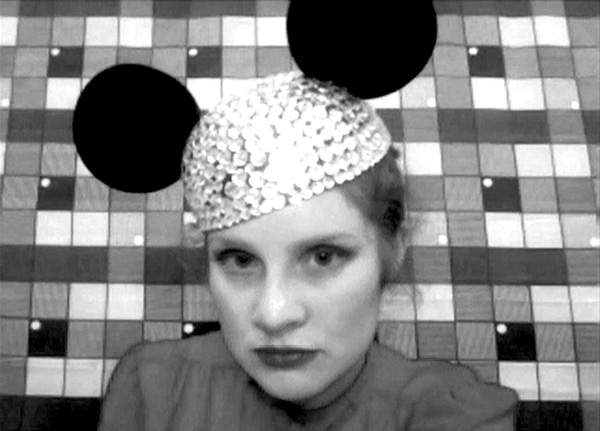
4-HOUR CONFESSION (AFTER 1984 AFTER 1984, OR CONFESSION IS THE PRINCESS OF EVIDENCE)
first performed on
May 13, 2011
Antena Gallery, Chicago, IL
performed once in 2011
HEATHER WARREN-CROW
Milwaukee, Wisconsin
269197751h269197751e269197751a269197751t269197751h269197751e269197751r269197751w269197751a269197751r269197751r269197751e269197751n269197751c269197751r269197751o269197751w269197751@269197751g269197751m269197751a269197751i269197751l269197751.269197751c269197751o269197751m
simplesatellite.org/artwork
4-HOUR CONFESSION (AFTER 1984 AFTER 1984, OR CONFESSION IS THE PRINCESS OF EVIDENCE)
HEATHER WARREN-CROW
“4-Hour Confession (After 1984 After 1984, or Confession is the Princess of Evidence)” is a live networked performance that was exhibited via Ustream.com. This piece was presented alongside other networked performances as part of the show “Daisy Chain,” curated by Adam Trowbridge and Jessica Westbrook and projected in real-time at Antena Gallery. The conceit of the exhibition was that every performer had to respond to other performances in the show as they unfolded. This required all of us to be flexible and receptive, if not improvisational. My piece was motivated by two very different cultural artifacts: the devastating forced confession at the end of Michael Radford’s filmic adaptation of 1984 and the children’s game Mad Libs. As preparation for my piece, I removed key words from Winston’s final monologue, transforming the text into a Mad Libs-style template for confession. Then, during the course of the live performance, five assistants watched the other pieces in “Daisy Chain” and used them as inspiration for filling in the blanks (following my prompts for adjectives, verbs, etc.). When a monologue was complete, the assistant handed it to me to read in front of my low-resolution webcam. I confessed a series of grotesque, often crude and ridiculous crimes, reapplied makeup, and sipped a Starbucks Frappuccino for four continuous hours. By the end, my lipstick was clownish and my jeweled Mickey Mouse ears sat awkwardly on my head. “4-Hour Confession” marks changes in the nature of surveillance since George Orwell’s novel and Radford’s film were produced. The current popularity of paparazzi shots and social networking sites (including Ustream) speaks not to our fears, but to our love of surveillance. “4-Hour Confession” is a response to our obsession with surveilling ourselves. The confessions in 1984 and the ones in my piece are similar in that they all were scripted by others and presented onscreen. However, I was not a victim of torture at the hands of a totalitarian government; I willingly took on the crimes of others. Indeed, I needed those crimes in order to have a voice on the world stage (that is, the Internet), just as many celebrities need a spectacular confession in order to make it big. “4-Hour Confession” combines this critique of image culture with a commentary on the reception of performance art. It gestures towards a common misunderstanding of performance-especially body art-as inherently perverted, dangerous, even criminal.